 Dr Srikanta K. Panigrahi
Dr Srikanta K. Panigrahi
Director General and Distinguished Research Fellow, IISD
Indian Policy Maker and Technocrat
Sustainable Fashion focuses and works towards the betterment of the interdependent social, ecological, and financial systems of the fashion industry. It is an ongoing process to bring change in the product and in the different parts of the fashion industry systems for economic development, ecological integrity, and social justice.
Then, the genuine question comes to our mind – When the concept and the basics of Sustainable Fashion took birth ? What was the actual or real need of this Sector ? What are the problems that traditional fashion sector encountered ?
In recent years, the world has seen rapid climate change as a result of global warming, which is devastating. According to the reports published by the 5th Report of the Intergovernmental Panel on Climate Change (IPCC), the average global temperature of the Planet has risen to 1.15oC above the pre-industrial levels and if these warming trends continue to increase at the current rate, it is likely to increase to 1.5oC, between 2030 and 2052. Fashion industry being one of the largest contributors of the global Greenhouse Gases (GHGs) and one of the highest water consuming sectors, has come under the scrutiny of the all of us, especially the concern global citizen communities for their own survival. Ms Fee Gilfeather, Head Of Audience & Strategic Planning, Oxfam, UK and a well known Global Sustainability Expert said at Madrid, Spain at 25th Conference Of Parties (COP) that – “Fashion Industry alone is the second largest consumer of water resources and also responsible for about more than 10% global GHG emissions. For Example, it will take roughly 13 years for an individual to drink water that is used to make one pair of Jeans and one T-Shirt.“
According to UNCTAD, “Fashion or Textile industry today uses 93 billion cubic meters of water annually, which could suffice the needs of five million people and approximately half a million tons of microfiber, which is the equivalent of 3 million barrels of oil, is dumped into the ocean every year.” “The total annual global greenhouse gas emissions from textile production currently stand at 1.2 billion tonnes, which is much more than those of all, Green House Gas (GHG) emissions, coming from entire international flights and maritime shipping sectors, combined together,” says the Nature Climate Change Journal. These alarming figures do not only throw enough light on the planet’s deteriorating environment, but also create an urgent push and pressure for the global community to adopt Sustainable Fashion, as a special discipline of Fashion Technology and Fashion Design today, which would ensure Sustainability in Fashion Industry. It has also made the policy makers and all other stakeholders of this sector to rethink the existing systems, to find alternatives and solutions, and to help in its implementation.
When we turn the pages of history, we find that Sweden in 1968 had proposed an international conference to address global environmental problems, in regard to her concern for transboundary pollution in the form of acid rain. Also, people all over the world had started realizing that the planet was heading towards destruction and the responsibility of the planet’s well-being lay on their shoulders. Not only was the planet on stake, but also their survival in future, along with it.
Later in 1972, the contemporary evolutionary process of the principles of sustainable development law started with the Declaration of the United Nations Conference on Human Environment. It was held in Stockholm, Sweden. It’s main aim was to encourage and provide guidelines to the international and national organizations designed to protect and improve the human environment. This conference was the UN’s first major conference on international environmental issues and it marked a turning point in the development of international environmental politics and sustainable development.
Today, the UN has an Alliance for Sustainable Fashion, which is designed to contribute to the UN Sustainable Development Goals (SDGs), through coordinated action in the fashion sector. According to the Alliance, Sustainable Fashion encompasses social issues, such as improvements in working conditions and remuneration for workers, as well as environmental issues, which include the reduction of the industry’s waste stream, and decrease in water pollution and greenhouse gas emissions. They focus to bring major changes to the production processes and the consumption patterns in fashion.
The fashion industry is the second-largest consumer of world water consumption and it pollutes the ocean with micro plastics.. The reign of Synthetic fibre and Fast Fashion for the last few decades has led to the extreme deterioration of the planet’s environment. Fast fashion has given rise to the throwaway culture, followed by the landfills. A lot of non-renewable sources of energy, chemicals, and water are used to produce clothes that often end up in the landfill, much before their expiry date. The underutilization of the embodied energy in the clothes has led to the tremendous emission of greenhouse gases. The slow fashion brands are comparatively more sustainable, because they have long term visions, along with profits, they try to balance the social as well as environmental considerations, whereas the fast fashions, largely adopt the short-sighted limited approach and also the principles of maximizing the profits at the cost of everything in the shortest possible time period.
Due to the ongoing pandemic and the resultant lockdown, the entire production, processing, and business of the fashion industry have been paused. This has led to the shutdown of the mills and factories, sharp fall in the orders, excess inventories, cancellation of events, no footfall at stores, and last but not the least, the paucity of the cash flow. There are factories, which have announced the layoffs of thousands of workers. The individual artisans and designers are unable to work due to the lack of raw materials and its transportation
COVID-19 has sent shock waves throughout that the fashion industries have started to crumble both in terms of the financial and the social systems and the industry has been pushed into an unexpected slow down point. On the other hand, reports and graphs show a sharp fall in the pollution levels, because of non-industrial activities. The planet seems to have started rejuvenating and resurfacing, but it would prove to be a temporary phenomenon, if permanent methods of sustainable production processes are not followed in each stage of its life cycle.
The need of the hour is to produce functional garments such as medical gowns and face masks, which some factories and brands have started producing, instead of their existing product range. In fact, frequent washing, online shopping and the repeated wearing of some selected clothes, etc have become a trend now. With the need for remote working, human beings are being pushed subtly towards a minimalistic way of life, where they are choosing their needs over their greed. Cashless transactions and QR codes are being opted more frequently these days, in order to avoid the virus. With the intervention of technology and wise consumerism, fashion is likely to become more sustainable.
In the post-COVID-19 era, it seems like the fashion industry might have to start all over again. Industry critics and thought-leaders have cautiously whispered the words “Reset Button” in candid conversations with Harper’s Bazaar. It would be great, if the industry took advantage of this time to rethink, recalibrate, and reconceptualise the material innovation and product offerings, in fashion. So, when they start afresh, they are more sustainable, comparatively than before. Some standards could be set to evaluate and reduce the water and carbon footprints in their product and process life cycles. These standards should not be just a set of boxes, to tick and do away with, but rather it should be the first filter for auditing, leading to further monitoring, evaluation, and improvement in various steps of supply chain inputs, at each life cycle stage.
According to the McKinsey & Company Annual Report, 2020, fashion may see a recessionary market and the industry landscape may undergo a dramatic transformation. The companies and brands that struggled before the pandemic might dissolve in no time. Only stronger and stronger companies would survive this crisis, especially those who are fully prepared to stabilize their core businesses, before seeking new markets, strategic opportunities and can identify right pockets of growth. Later on, they might invest in building tools for improving operational agility, boosting their productivity, and future-proofing their business models.
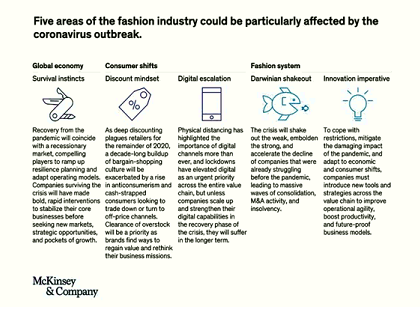
A massive intervention of technology and innovation probably is going to be witnessed in the fashion industry in the near future, which may give rise to sustainable and experience-centric solutions. Companies are expected to strengthen and improvise their digital capabilities in order to stand the digital escalation, which is likely to be an aftermath of COVID-19.
In such a context, the industries may have to repurpose the excess raw material, dead stock fabric, and finished products soon after the lockdown. Discounted clearance of overstock is likely to be a priority of companies, as they would probably think of regaining and re-establishing their market value and business missions. Due to the liquidity crunch and the culture of bargain shopping, consumers are most likely to go for off-price retailers and to trade down, though ecologically sensitive customers will look for water and carbon foot-print levels along with price-levels which suit their affordability.
Consumers may tend to buy fewer, but more durable and functional pieces, due to their budgetary limitation in post COVID 19 period. Most probably they would also start consuming more responsibly and discarding thoughtfully. It is thought that the sentimental value might take over materialism. Thus, may be leading to the gain in popularity among handloom, handicraft and natural products. Due to conscious consumerism, the brand value may become one of the top priorities of the consumers. Thus, it is pushing the brands to work towards building ethical and transparent supply chains. Mass production and consumption are likely to slow down. Capsule Wardrobe and Classic Clothing may be on the trend cards. In designing, innovation and functionality may take an upper hand, in comparison to aesthetic appeal.
Amidst the lockdown, many companies have been paralyzed due to their fragmented supply chains, all over the world. These companies may consider shifting their bases to their native countries, rather than putting together bits and pieces from all over the world. So, they may consider focusing on localized vertical processing and production.
Due to the COVID-19 situation in China, the Clothing Manufacturers’ Association of India has released an issue to draw global attention to India as an alternative hub. According to the issue released, if the ongoing situation prevails, for the next few months, the buyers may be forced to explore other alternatives, where India and Bangladesh may stand to gain much ahead of Vietnam, Cambodia, or any other Southeast Asian suppliers. India has a complete supply chain that is where it scores ahead. The only drawback of the Indian garment manufacturers is that they neither have the scale nor the cost competitiveness to present them as credible sourcing alternatives, which needs to be given urgent attention now.
Amidst pandemic, there is a huge demand for medical and non-medical masks. The Indian designers, SHGs, and export houses have been receiving massive orders and they are working hard to meet the demand, which is not only from India but also from countries like the USA, Dubai, Mauritius. The Khadi and Village Commission has developed Double-Layered and Triple-Layered Cotton and Silk Masks respectively. They are looking forward to supplying Khadi Masks to foreign countries, once the ban on the export of non-medical masks is lifted by the Commerce Ministry of India.
In India, it looks like; consumerism may shift towards handicraft and handloom products. Ancient methods of processing, chemical-free production and the use of organic materials may be preferred widely due to conscious purchases. Localized processing and production will gain preference over imported raw materials, textiles, and apparel, in order to cut down the expenses. The adoption of such practices may help in curtailing down the pollution levels in addition. Recently Indian Prime Minister has asked the citizens to be more and more self-reliant, while addressing the nation.
The outbreak of the corona virus is no doubt, a global wake up call. It has made us understand that the fashion industry could do away with fashion runways and fashion week celebrations anymore and that the consumer shall be looking for more to quality, over quantity. Innovation and digitalization might play a significant role in the future of sustainable fashion. It has also made the entire mankind aware that if they do not take enough care of nature, nature could be forced to take extreme measures to do so, for their own existence.
The Author is a Leading Indian Sustainability Thought Leader and Director General at Indian Institute of Sustainable Development (IISD), New Delhi and deeply engaged in Climate Action Leadership Initiatives of UNFCCC, UNEP and Government of India. He plays a Leadership role in initiating IISD Sustainable Fashion Platform and establishing IISD Sustainable Fashion Professional Network (ISFPN); which is the only and first National Sustainability Program in Fashion Sectors in India, is being a prestigious Member of the United Nations Sustainable Fashion Alliance and affiliated of Ministry of Textiles, Government of India.
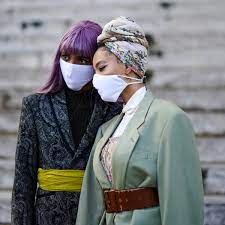
COVID 19 gave Fashion a Chance to
Change for the Better
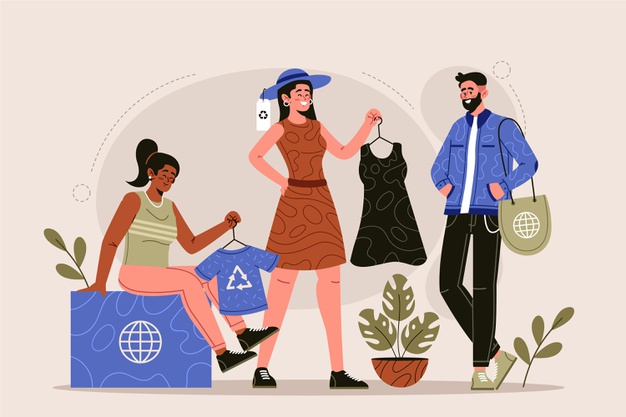
Sustainable Fashion is at the Peak, it's Simple
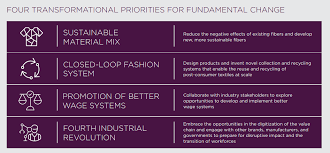
Sustainable Fashion ensures 4 Priorities For Change in Present Day Fashion Trends, Such as Sustainable Material Mix, Closed Loops in Fashion Systems and so on
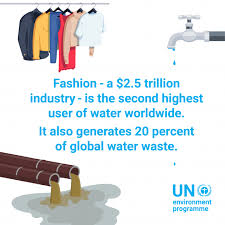

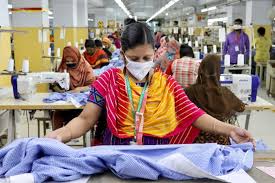
Cotton is 100% Recyclable,
as a Sustainable Fashion Material

Single Use Plastic in normal PPE Kits,
has created huge Environmental Problems now
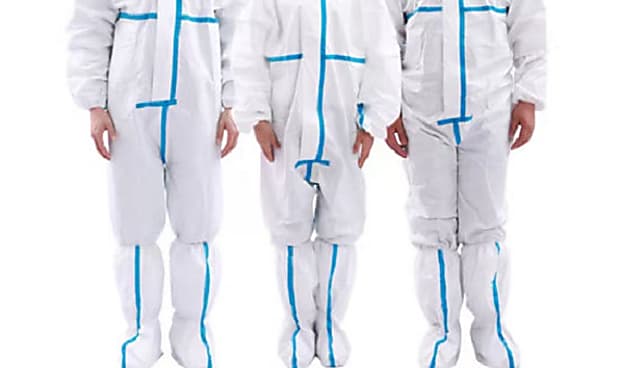
PPE Kits in Disposable Protective
Fashion Clothing is available now - use them.








